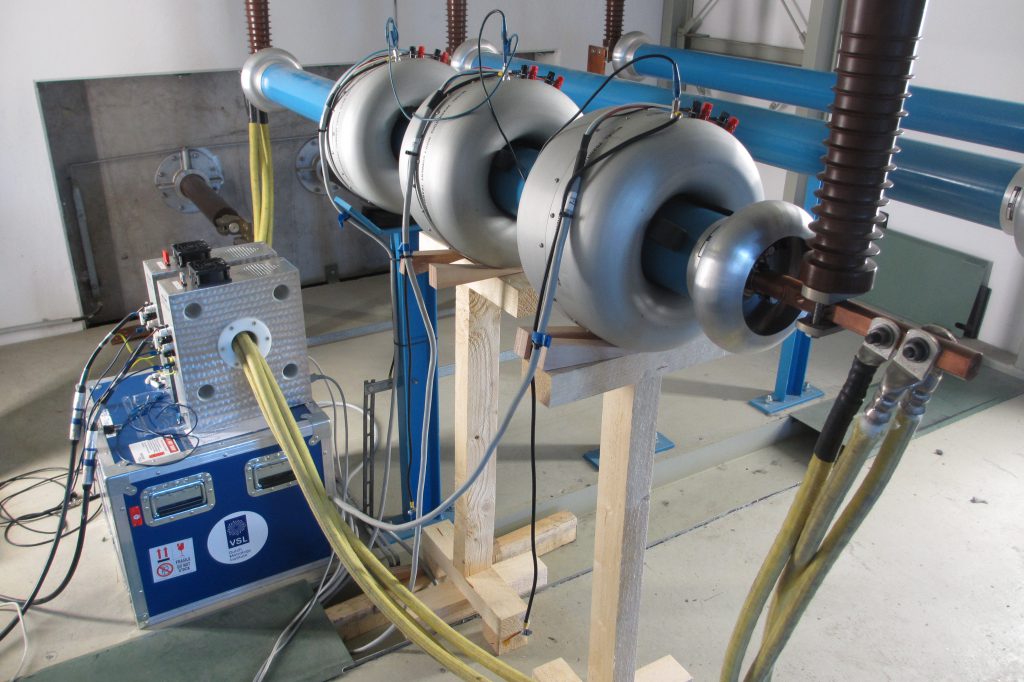Primary reference setup for calibration of advanced industrial LMS
In the ELPOW project, a reference setup for reactor loss measurement was produced with a voltage range of 500 V, as well as reference setups for calibration of transformer LMS up to 100 kV but with an uncertainty of only 50 µW/VA. As required by the power transformer community, this project is realising the extension of this reactor measurement setup to the multi-kV range whilst still maintaining high accuracy. Furthermore present primary reference setups at National Metrology Institutes (NMIs) are being improved by a factor of 2– 5 in uncertainty to better than 20 mW/VA.

New reference setups
For the calibration of future commercial advanced LMS products, two NMI primary reference setups with complementary measurement approaches have been designed that are a factor of 2–5 better in uncertainty than the 50 mW/VA setups of the ELPOW project. One of the reference setups has an extended measurement range of 230 kV (line-to-ground) in order to cover HV reactor loss measurements.
Several lines of research have been started to enhance the uncertainty of the present NMI primary power transformer reference setups by a factor of 2–5 to better than 20 mW/VA. These include:
- New three-stage electronically-compensated current transformers have been designed for the accurate measurement of test currents ranging from 1 A to 2000 A with an uncertainty of better than 10 mA/A in magnitude and 10 mrad in phase displacement.
- A new sampling power measurement technique has been developed and characterised, especially for the low power factors relevant for transformer loss measurements.
- A HV parallel plate capacitor is under construction that will be a key instrument for determining the absolute value and voltage dependence of the dissipation factor (tan d) of HV capacitors used in the voltage channels of the reference setups.
- The accuracy of an existing reference voltage transformer has been evaluated, and improvements have been designed for reaching an uncertainty of better than 10 mV/V in magnitude and 10 mrad in phase displacement. This reference transformer will be used to evaluate the accuracy of the new HV voltage channels developed in the project.

Good practice guide
A first draft of a good practice guide on LMS calibration has been prepared, summarising the pro’s and con’s of LMS component and system calibration, including discussion of the achievable uncertainties in the calibration.
An overview of the table of contents of the good practice guide:
- Introduction
- Loss measurement systems
- LMS calibration requirements
- Traceability
- LMS calibration
- Calibration approaches
- Practical aspects
- Reference setups
- Calibration certificates
- Error correction
- Calibration intervals and cross-checks
- Calibration intervals
- Cross-checks
- Conclusion
- References
